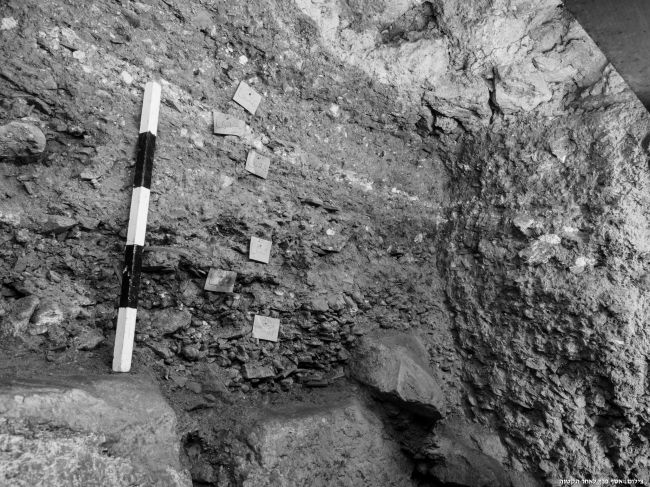A team from Tel Aviv University and the Israel Antiquities Authority have unearthed a 220m section of the street that’s estimated to be over 2,000 years old.
The team started excavating the street in 2013 but have recently found more than 100 coins under the paving stones which date the street to about 31AD.
The road is about 8m wide and links the Pool of Siloam in the south to the Temple Mount and would have been used by thousands of Jews during the annual pilgrimage festivals of Passover, Shavuot, and Sukkot.
According to Israel Antiquities Authority archaeologist and dig director Ari Levy, ‘both sides of the street were lined with shops that were likely two stories high’.
Researchers believe that there is strong evidence that Pontius Pilate, the Roman governor of the province of Judaea, commissioned the building of the street. Pilate the official who presided over the trial of Jesus is famous for washing his hands in front of the crowd that demanded his death, declaring that he was innocent of his blood, before giving the go-ahead for the crucifixion.

Image credit: Tel Aviv: Journal of the Institute of Archaeology of Tel Aviv University
Also read: Archaeologists discover 30 ancient coffins in Egypt
Dr Donald Ariel, an archaeologist and coin expert with the Israel Antiquities Authority, explained that ‘dating using coins is very exact.’
‘As some coins have the year in which they were minted on them, what that means is that if a coin with the date on it is found beneath the street, the street had to be built in the same year or after that coin had been minted, so any time after.’
‘However, our study goes further, because statistically, coins minted some 10 years later are the most common coins in Jerusalem, so not having them beneath the street means the street was built before their appearance, in other words only in the time of Pilate.’
The study also notes that the street was an important one, ‘The importance of this street is evident from its dimensions as well as from the quality of its construction, which undoubtedly required an expansive workforce that included skilled labourers and craftsmen,’ the researchers wrote, noting that it’s’ at least 8m wide and would have required 10,000 tonnes of quarried limestone rock to construct.’
The underground street known as the Stepped Street or Pilgrim’s Path is not yet open to the public, as excavation continues in two shifts daily from 7 am to 10 pm, according to the Times of Israel.
Featured image: The Second Temple Pool of Siloam/ Wikipedia Commons
Israeli archaeologists have concluded that a stepped-stone street once used by Jewish pilgrims to reach the Temple in Jerusalem was built by Pontius Pilate, the Roman governor of Judea best known for washing his hands of Jesus’ fatehttps://t.co/CiKMHyixg7
— Haaretz.com (@haaretzcom) October 22, 2019
















